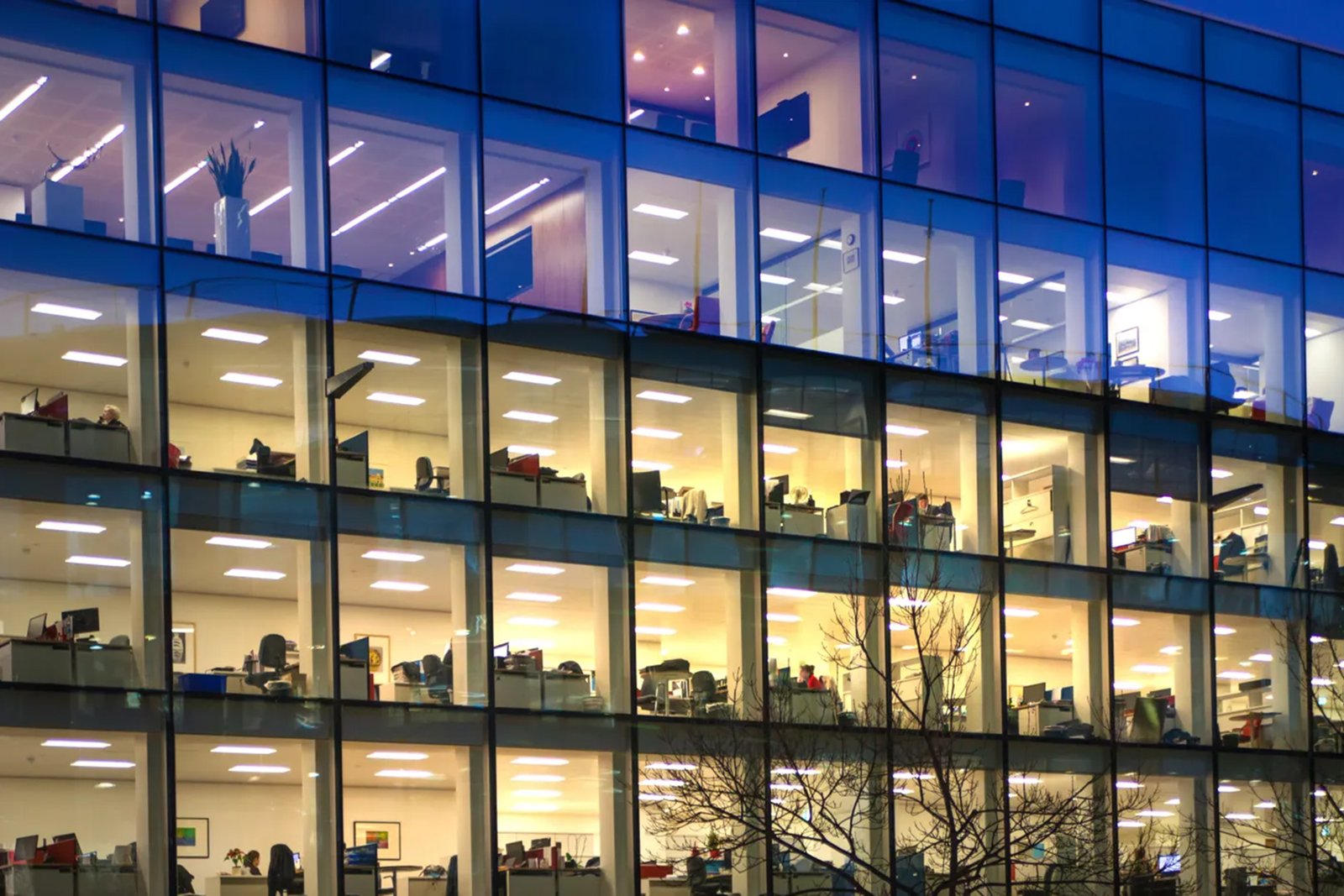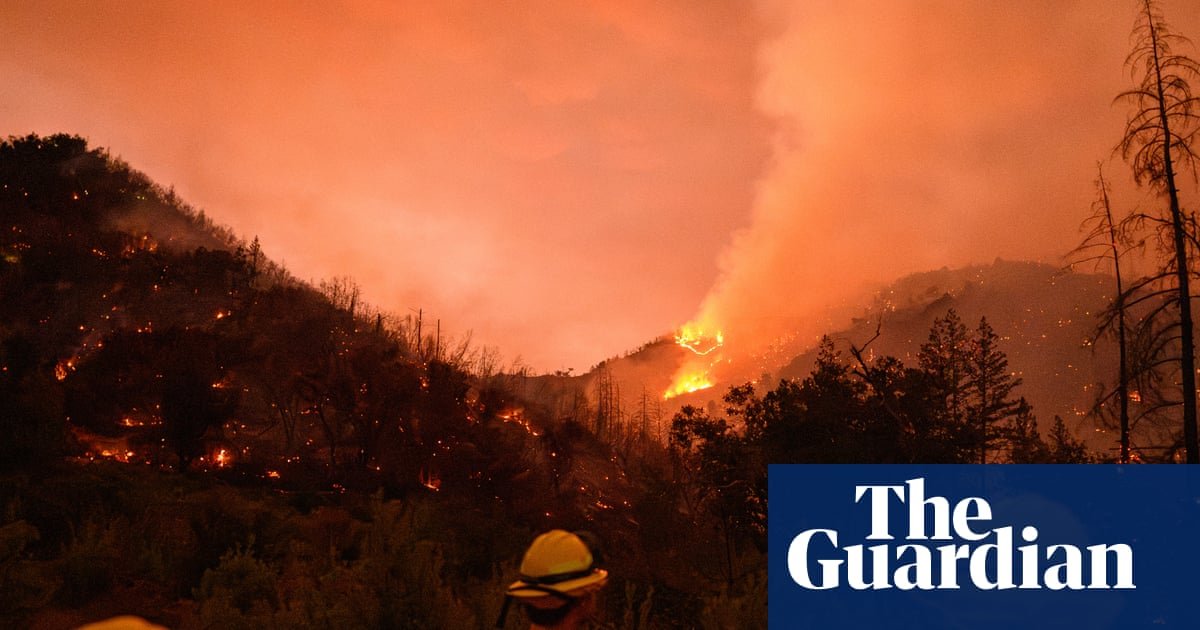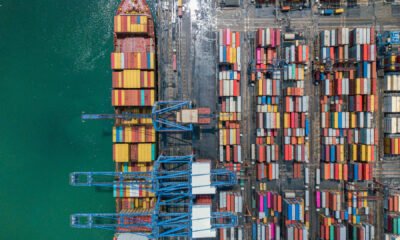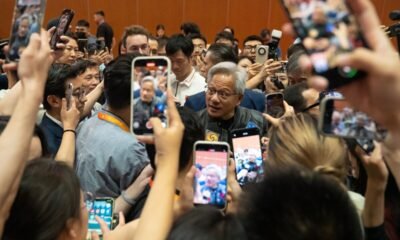Business
Business executives sound alarm over looming workforce displacement due to AI — Harvard Gazette

In recent weeks, several prominent executives at big employers such as Ford and J.P. Morgan Chase have been offering predictions that AI will result in large white-collar job losses.
Some tech leaders, including those at Amazon, OpenAI, and Meta have acknowledged that the latest wave of AI, called agentic AI, is much closer to radically transforming the workplace than even they had previously anticipated.
Dario Amodei, chief executive of AI firm Anthropic, said nearly half of all entry-level white-collar jobs in tech, finance, law, and consulting could be replaced or eliminated by AI.
Christopher Stanton, Marvin Bower Associate Professor of Business Administration at Harvard Business School, studies AI in the workplace and teaches an MBA course, “Managing the Future of Work.” In this edited conversation, Stanton explains why the latest generation of AI is evolving so rapidly and how it may shake up white-collar work.
Several top executives are now predicting AI will eliminate large numbers of white-collar jobs far sooner than previously expected. Does that sound accurate?
I think it’s too early to tell. If you were pessimistic in the sense that you’re worried about labor market disruption and skill and human capital depreciation, if you look at the tasks that workers in white-collar work can do and what we think AI is capable of, that overlap impacts about 35 percent of the tasks that we see in labor market data.
“My personal inclination — this is not necessarily based on a deep analytical model — is that policymakers will have a very limited ability to do anything here unless it’s through subsidies or tax policy.”
The optimistic case is that if you think a machine can do some tasks but not all, the tasks the machine can automate or do will free up people to concentrate on different aspects of a job. It might be that you would see 20 percent or 30 percent of the tasks that a professor could do being done by AI, but the other 80 percent or 70 percent are things that might be complementary to what an AI might produce. Those are the two extremes.
In practice, it’s probably still too early to tell how this is going to shake out, but we’ve seen at least three or four things that might lead you to suspect that the view that AI is going to have a more disruptive effect on the labor market might be reasonable.
One of those is that computer-science graduates and STEM graduates in general are having more trouble finding jobs today than in the past, which might be consistent with the view that AI is doing a lot of work that, say, software engineers used to do.
If you look at reports out of, say, Y Combinator or if you look at reports out of other tech sector-focused places, it looks like a lot of the code for early-stage startups is now being written by AI. Four or five years ago, that wouldn’t have been true at all. So, we are starting to see the uptake of these tools consistent with the narrative from these CEOs. So that’s one piece of it.
The second piece is that even if you don’t necessarily think of displacement, you can potentially think that AI is going to have an impact on wages.
There are two competing ways of thinking about where this is going to go. Some of the early evidence that looks at AI rollouts and contact centers and frontline work and the like suggests that AI reduces inequality between people by lifting the lower tail of performers.
Some of the best papers on this look at the randomized rollout of conversational AI tools or chatbots and frontline call-center work and show that lower-performing workers or workers who are at the bottom of the productivity distribution disproportionately benefit from that AI rollout tool. If these workers have knowledge gaps, the AIs fill in for the knowledge gaps.
What’s driving the accelerated speed at which this generation of AI is evolving and being used by businesses?
There are a couple of things. I have a paper with some researchers at Microsoft that looks at AI adoption in the workplace and the effects of AI rollout. Our tentative conclusion was that it took a lot of coordination to really see some of the productivity effects of AI, but it had an immediate impact on individual tasks like email.
“Our tentative conclusion was that it took a lot of coordination to really see some of the productivity effects of AI, but it had an immediate impact on individual tasks like email.”
One of the messages in that paper that has not necessarily been widely diffused is that this is probably some of the fastest-diffusing technology around.
In our sample, half of the participants who got access to this tool from Microsoft were using it. And so, the take-up has been tremendous.
My guess is that one of the reasons why the executives … didn’t forecast this is that this is an extraordinarily fast-diffusing technology. You’re seeing different people in different teams running their own experiments to figure out how to use it, and some of those experiments are going to generate insights that weren’t anticipated.
The second thing that has accelerated the usefulness of these models is a type of model called a chain-of-thought model. The earliest versions of generative AI tools were prone to hallucinate and to provide answers that were inaccurate. The chain-of-thought type of reasoning is meant to do error correction on the fly.
And so, rather than provide an answer that could be subject to error or hallucinations, the model itself will provide a prompt to say, “Are you sure about that? Double check.” Models with chain-of-thought reasoning are much, much more accurate and less subject to hallucinations, especially for quantitative tasks or tasks that involve programming.
As a result, you are seeing quite a lot of penetration with early stage startups who are doing coding using natural-language queries or what they call “vibe coding” today. These vibe-coding tools have some built-in error correction where you can actually write usable code as a result of these feedback mechanisms that model designers have built in.
The third thing driving major adoption, especially in the tech world, is that model providers have built tools to deploy code. Anthropic has a tool that will allow you to write code just based on queries or natural language, and then you can deploy that with Anthropic tools.
There are other tools like Cursor or Replit where you will ultimately be able to instruct a machine to write pieces of technical software with limited technical background. You don’t necessarily need specific technical tools, and it’s made deployment much, much easier.
This feeds back into the thing that I was telling you earlier, which is that you’ve seen lots of experiments and you’ve seen enormous diffusion. And one of the reasons that you’ve seen enormous diffusion is that you now have these tools and these models that allow people without domain expertise to build things and figure out what they can build and how they can do it.
Which types of work are most likely to see change first, and in what way? You mentioned writing code, but are there others?
I have not seen any of the immediate data that suggests employment losses, but you could easily imagine that in any knowledge work you might see some employment effects, at least in theory.
In practice, if you look back at the history of predictions about AI and job loss, making those predictions is extraordinarily hard.
We had lots of discussion in 2017, 2018, 2019, around whether we should stop training radiologists. But radiologists are as busy as ever and we didn’t stop training them. They’re doing more and one of the reasons is that the cost of imaging has fallen. And at least some of them have some AI tools at their fingertips.
And so, in some sense, these tools are going to potentially take some tasks that humans were doing but also lower the cost of doing new things. And so, the net-net of that is very hard to predict, because if you do something that augments something that is complementary to what humans in those occupations are doing, you may need more humans doing slightly different tasks.
And so, I think it’s too early to say that we’re going to necessarily see a net displacement in any one industry or overall.
If AI suddenly puts a large portion of middle-class Americans out of work or makes their education and skills far less valuable, that could have catastrophic effects on the U.S. economy, on politics, and on quality of life generally. Are there any policy solutions lawmakers should be thinking about today to get ahead of this sea change?
My personal inclination — this is not necessarily based on a deep analytical model — is that policymakers will have a very limited ability to do anything here unless it’s through subsidies or tax policy. Anything that you would do to prop up employment, you’ll see a competitor who is more nimble and with a lower cost who doesn’t have that same legacy labor stack probably out-compete people dynamically.
It’s not so clear that there should be any policy intervention when we don’t necessarily understand the technology at this point. My guess is that the policymakers’ remedy is going to be an ex-post one rather than an ex-ante one. My suspicion is better safety-net policies and better retraining policies will be the tools at play rather than trying to prevent the adoption of the technology.
Source link
Business
Tories would maximise North Sea oil and gas extraction, Badenoch to say | Kemi Badenoch

The Conservative party will aim to “maximise extraction” of oil and gas in the North Sea if it wins power, Kemi Badenoch is expected to announce.
Badenoch will use a speech in Aberdeen in the coming days to set out her plans to extract as much oil and gas as possible instead of shifting away from fossil fuels, the Sunday Telegraph reported.
She will announce the Tories plan to overhaul the North Sea Transition Authority, which oversees the issuing of licences, dropping the word transition and replacing its 12-page mandate with a simple order to extract the maximum possible amount of fossil fuel.
Badenoch said Britain “cannot afford not to be doing everything to get hydrocarbons out the ground” to boost growth.
She said: “We are in the absurd situation where our country is leaving vital resources untapped while neighbours such as Norway extract them from the same seabed.
“Britain has already decarbonised more than every other major economy since 1990, yet we face some of the highest energy prices in the developed world.
“This is not sustainable and it cannot continue. That is why I am calling time on this unilateral act of economic disarmament and Labour’s impossible ideology of net zero by 2050.
“So, a future Conservative government will scrap all mandates for the North Sea beyond maximising extraction.
“It is time that common sense, economic growth and our national interest came first, and only the Conservatives will deliver that. We are going to get all our oil and gas out of the North Sea.”
Last month, the energy and net zero secretary, Ed Miliband, accused the Conservatives of being “anti-science” by abandoning a political consensus on net zero.
after newsletter promotion
In the first of what is promised to be an annual “state of the climate” report, the Labour MP set out the findings of a Met Office-led study that detailed how the UK was already hotter and wetter, and faced a greater number of extreme weather events.
Miliband quoted the former prime minister Theresa May, who put net zero targets into law in 2019 and had argued that the real climate zealots were “populists who offer only easy answers to complex questions”. He added: “I couldn’t put it better myself.”
Business
More than 500 workers at Voice of America and other broadcasters to be laid off | Trump administration

The agency that oversees Voice of America and other government-funded international broadcasters is eliminating jobs for more than 500 employees, a Trump administration official said. The move could ratchet up a months-long legal challenge over the news outlets’ fate.
Kari Lake, acting CEO of the US Agency for Global Media, announced the latest round of job cuts late Friday, one day after a federal judge blocked her from removing Michael Abramowitz as VOA director.
US district judge Royce Lamberth had ruled separately that the Republican administration had failed to show how it was complying with his orders to restore VOA’s operations. His order Monday gave the administration “one final opportunity, short of a contempt trial” to demonstrate its compliance. He ordered Lake to sit for a deposition by lawyers for agency employees by 15 September.
On Thursday, Lamberth said Abramowitz could not be removed without the approval of the majority of the International Broadcasting Advisory Board. Firing Abramowitz would be “plainly contrary to law”, according to Lamberth, who was nominated to the bench by Ronald Reagan.
Lake posted a statement on social media that said her agency had initiated a reduction in force, or RIF, eliminating 532 jobs for full-time government employees. She said the agency “will continue to fulfill its statutory mission after this RIF– and will likely improve its ability to function”.
“I look forward to taking additional steps in the coming months to improve the functioning of a very broken agency and make sure America’s voice is heard abroad where it matters most,” she wrote.
A group of agency employees who sued to block VOA’s elimination said Lake’s move would give their colleagues 30 days until their pay and benefits end.
“We find Lake’s continued attacks on our agency abhorrent,” they said in a statement. “We are looking forward to her deposition to hear whether her plan to dismantle VOA was done with the rigorous review process that Congress requires. So far we have not seen any evidence of that.”
They added: “We will continue to fight for what we believe to be our rights under the law.”
In June, layoff notices were sent to more than 600 agency employees. Abramowitz was placed on administrative leave along with almost the entire VOA staff. He was told he would be fired effective 31 August.
The administration said in a court filing Thursday that it planned to send RIF notices to 486 employees of VOA and 46 other agency employees but intended to retain 158 agency employees and 108 VOA employees. The filing said the global media agency had 137 “active employees” and 62 other employees on administrative leave while VOA had 86 active employees and 512 others on administrative leave.
The agency also houses Radio Free Europe/Radio Liberty, Radio Free Asia, Middle East Broadcasting Networks and Radio Martí, which beams Spanish-language news into Cuba. The networks, which together reach an estimated 427 million people, date to the cold war and are part of a network of government-funded organizations trying to extend US influence and combat authoritarianism.
In March, Abramowitz warned that Trump’s attempts to dismantle the VOA would be a “self-inflicted blow” to American national security, saying: “If America pulls off the playing field and cedes it to our adversaries, then they’re going to be telling the narratives that people around the world are going to be hearing, and that can’t be good for America … They’re going to be hearing an anti-America narrative. We need to fight that with truth.”
after newsletter promotion
He added: “The major challenge for the United States in general is this global information war in which countries like China and Russia are essentially really having our lunch. … So, I really feel that we need an organization that is accurate, unbiased, objective, and that tells the truth about America to the rest of the world in the languages that they understand.”
This week, Trump also moved to remove union protections from a handful of federal employees, including those from the VOA.
In response, the American Federation of State, County and Municipal Employees, the nation’s largest trade union of public employees, said: “AFSCME members who fulfill the Congressionally mandated mission to broadcast Voice of America around the globe shine the beacon of freedom on the most oppressive of regimes. Now, because they have been fighting to keep Voice of America’s mission alive, their own voice on the job has been stripped from them. AFSCME will fight this illegal action in court.”
Earlier this year, foreign staff at US-backed media outlets voiced concerns over their safety following Trump’s shuttering of the global media agencies.
Speaking to the Guardian in March, Jaewoo Park, a journalist for Radio Free Asia, said: “We have many co-workers in different services, several of whom came here and sought asylum visas. If their own government knew they worked for RFA [Radio Free Asia] and they went back to their own country, their lives would be at risk.”
“Authoritarian governments have praised what Trump is doing right now … In Burma, Vietnam, Laos, Cambodia, there were people who fought for freedom and democracy, and they came to work at RFA. It’s very risky for them. Their lives are in danger if Radio Free Asia doesn’t exist,” he added.
Business
Vineyards assess damage as wildfire rips through California wine country: ‘A devastating situation’ | California wildfires

Elton Slone and his colleagues at the Robert Craig Winery in Napa Valley had gathered for their annual pre-harvest company party last week – complete with copper pot carnitas and grape tacos – when one of his co-workers noticed an alert on her phone. The Pickett fire, a blaze that had started about 10 miles away near the town of Calistoga, was moving toward their vineyards on Howell Mountain.
Knowing that the Glass fire – a 2020 blaze that damaged numerous wineries and spoiled a year’s harvest – had burned along the same path, Slone hoped no fuel remained for this new fire. “But that was not the case,” he said. Within the week, the winery’s Candlestick Vineyard would become “a sacrificial lamb for the town of Angwin” when firefighters lit a controlled burn on their property to control the larger fire.
Vineyards can make excellent fire breaks because they are typically clear of burnable plant matter, and grape vines themselves are moist enough to be nonflammable. But heat damage and smoke can still destroy a crop.
The Robert Craig Winery lost the entire crop of their Candlestick Vineyard, which would have generated $4.5m in revenue. And Slone estimates about 10% of the vines will need to be replanted – a process that will cost hundreds of thousands of dollars and take a decade to see new bottles of wine ready for market. The team will test grapes on another one of their vineyards closer to harvest to see whether the smoke affected them.
The loss comes at the end of the growing season – after Slone’s vineyard had sunk nearly $1m into farming costs – and is made even more devastating because it’s happened before. The memories of the 2020 Glass fire and 2018 Camp fire, which burned farther east but still sent smoke to blanket Napa’s grapevines, are still fresh. “It’s financially a devastating situation,” said Slone.
The still-burning Pickett fire, which began on 21 August in northern Napa county, quickly burned through 6,800 acres (2,750 hectares), making it the San Francisco Bay Area’s largest wildfire this year. Preliminary estimates show that it caused $65m in agricultural losses, largely to wine grape growers, affecting about 1,500 acres (610 hectares) of agricultural land.
Although that damage is significantly less than that wrought by the Glass fire – which burned through 67,000 acres (27,000 hectares) and racked up $3.7bn in losses – the growing threat of wildfires in arid California has still shaken the wine industry.
“Northern California wine country is one of the treasures of the United States,” said Slone. “It’s something that I think all Americans should be concerned about because it’s a uniquely American thing.”
‘Tastes like a campfire’
Along the west coast, wine grape growers have implemented many strategies to prepare for wildfires – with the support of scientists at the US Department of Agriculture and local universities.
Ben Montpetit, chair of the University of California, Davis’s viticulture and enology department, said in an emailed statement that the industry has employed “barrier sprays to reduce smoke uptake, annual testing to establish baseline smoke marker levels in grapes, and small-lot fermentations after smoke events to assess potential wine impact”.
“Researchers are also investigating which grape cultivars are more sensitive or tolerant to smoke exposure,” he added.
“We’ve made a lot of progress in the preparedness realm,” said Natalie Collins, president of the California Association of Winegrape Growers, who noted the industry established a smoke exposure taskforce after the losses in 2018 to aid growers after wildfires.
The existence of that taskforce hints at a perennial problem for vineyards: though they can often keep wildfire off their acres, there’s little that can keep smoke at bay. And if smoke sits in an area for too long, it can leave grapes tasting ashy, like a campfire.
“Smoke taint issues are kind of fickle,” said Heather Griffin, a partner at Summit Lake Vineyards and Winery. “It depends on the varietal, depends on your ripeness level and depends on how long the exposure was.”
Griffin’s family’s vineyards were saved from the Pickett fire – “They stopped the fire at the end of our ridge up on Howell Mountain,” she said – but they’ll need to send grapes out for testing before harvest to be sure the smoke didn’t taint it.
Protecting the industry
For the first year ever, crop insurers are offering a new coverage option called the fire insurance protection smoke index endorsement, which would insure vineyards for losses due to smoke exposure.
But some growers say the cost of crop insurance has become unattainable after repeated wildfires.
“Our insurance went up so much after the fires of 2020. It literally went from $40,000 a year for really great coverage for all of our properties and inventory, and now it’s $300,000 a year and covers nothing,” said Slone.
For the 95% of Napa valley’s wineries that are family-owned, that cost can be “catastrophic”, he adds.
The wine industry has historically relied on federal funding to support USDA and university research into wildfire preparedness. Although those levels have remained steady despite widespread federal cuts, eight federal wine grape research scientists – including a smoke exposure specialist – were fired and then rehired early in the Trump administration’s Doge-era cuts.
“We want to make sure that an industry like ours continues to be protected,” said Collins, as “we continue to see the writing on the wall in California that wildfires likely will continue to be an issue here.”
It’s possible that some federal disaster relief funding may work its way to affected vineyards, but Griffin says buying wine from those wineries “helps everybody that’s up here”.
“Shoot them an email and buy some of their wine,” added Slone. “They will be the most appreciative people on the planet earth.”
-
Tools & Platforms3 weeks ago
Building Trust in Military AI Starts with Opening the Black Box – War on the Rocks
-

 Ethics & Policy1 month ago
Ethics & Policy1 month agoSDAIA Supports Saudi Arabia’s Leadership in Shaping Global AI Ethics, Policy, and Research – وكالة الأنباء السعودية
-

 Events & Conferences3 months ago
Events & Conferences3 months agoJourney to 1000 models: Scaling Instagram’s recommendation system
-

 Jobs & Careers2 months ago
Jobs & Careers2 months agoMumbai-based Perplexity Alternative Has 60k+ Users Without Funding
-

 Business1 day ago
Business1 day agoThe Guardian view on Trump and the Fed: independence is no substitute for accountability | Editorial
-

 Funding & Business2 months ago
Funding & Business2 months agoKayak and Expedia race to build AI travel agents that turn social posts into itineraries
-

 Education2 months ago
Education2 months agoVEX Robotics launches AI-powered classroom robotics system
-

 Podcasts & Talks2 months ago
Podcasts & Talks2 months agoHappy 4th of July! 🎆 Made with Veo 3 in Gemini
-

 Podcasts & Talks2 months ago
Podcasts & Talks2 months agoOpenAI 🤝 @teamganassi
-

 Jobs & Careers2 months ago
Jobs & Careers2 months agoAstrophel Aerospace Raises ₹6.84 Crore to Build Reusable Launch Vehicle





















